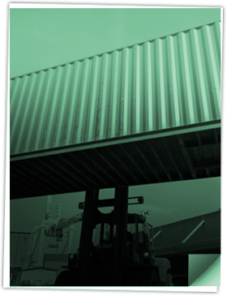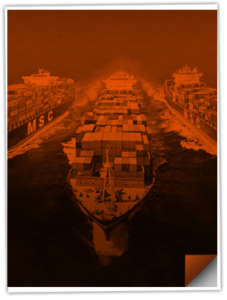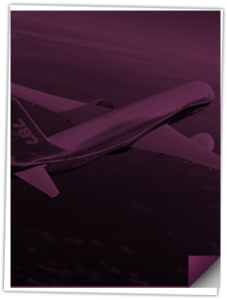Featured Headlines:
Do Not Be Fooled by CBP’s New Form Tool
How to File a Compliant Complaint with the FMC
Intermodal Gets Second Class Service from Class 1 Railroads
Do Not Be Fooled by CBP’s New Form Tool
- U.S. Customs and Border Protection (CBP) officials released a quick reference guide to help importers navigate its recently modernized CBP Forms 28, 29, 4647.
- Check out the guide here: Modernized ACE Portal – CBP Forms
How to File a Compliant Complaint with the FMC
- The Federal Maritime Commission (FMC) published an instructional video to help the industry file shipping complaints more effectively; you can access the video here.
- Traditionally, one would file a complaint with the FMC for relief of damages and injunctions, however there are other situations in which shippers, carriers, trade groups, etc. would file a case with the FMC.
- Click here to learn more about filing an official FMC complaint.
Intermodal Gets Second Class Service from Class 1 Railroads
- At a recent Surface Transportation Board (STB) meeting, Carl Bentzel of the Federal Maritime Commission (FMC) said that Class 1 railroads in the US should do more to free the chronic backlog of containers at US gateway seaports. Bentzel further argued that the US needs a more comprehensive and effective federal intermodal rail policy like Canada’s.
- As US imports rose 21% in 2021, intermodal moves for BNSF Railway, CSX, Norfolk Southern, and Union Pacific combined dropped 17%; more frequent transload-to-truck moves and acute shortages of equipment for export were the main causes.
- While the STB hearing was called primarily to address service problems affecting US agricultural exports, Bentzel took the opportunity to point out that trucking distribution alone is an impractical approach based on land and space limitations at US ports.
- The railroads often remind shippers and regulators that the ocean carriers are eager to return empties to Asia to support that lucrative trade lane. This commercial strategy amplifies the inland equipment shortages and promotes seaport congestion; it also tends to make intermodal a less profitable business for railroads.
- US Secretary of Transportation Pete Buttigieg pointed to a greatly diminished workforce as the root cause of poor Class 1 rail service for intermodal; headcounts across the rail industry are down a stunning 20% since 2019. Buttigieg said, “The turnover is far above normal levels, which presents safety and workforce concerns.”
Domestic Pit Stop Back Drop
- According to Bank of America, trucking demand is “near freight recession levels.” The bank evaluated shippers’ forecasts for rates, capacity, and inventory levels, and they determined that current trucking demand is approximately 23% lower than a year ago.
- Nationwide truckload demand indices all show the softest trucking market since June 2020; Additionally, the somewhat complex Outbound Tender Reject Index from FreightWaves shows a decrease in trucker load rejects from almost 26% a year ago to a more typical 9.9% today.
- Charleston and New York are battling acute chassis shortages which is causing severe delays for all aspects of drayage. As one might expect, this is also decreasing intermodal rail efficiencies to and from these crucial gateway ports.
- As Knight-Swift looks to create a national presence for LTL, the firm has acquired six domestic terminals in Q1 2022 alone. Though they are currently ranked 13th, the firm has sated their ambition to climb those ranks while also investing heavily in warehousing and intermodal capabilities.
- El Paso, Portland, Seattle, and Tacoma are fighting for the title of “Worst Places to Find a Truck”— each gateway requires over two weeks lead time to secure a drayage booking. Not to be outdone, Norfolk, Charleston, and New York are steadily climbing the rankings for this truly dubious honor!
Natural Gas Explosion
- As countries avoid Russian fuels, demand for US liquified natural gas (LNG) is an explosion of the positive kind.
- Many stalled export production projects are back in motion, though the costs of crucial building materials are skyrocketing almost as fast as global natural gas demand. Steel and nickel piping supplies and costs are very hard to predict, especially since Russia is a huge global player in the metals business. Overall production costs are estimated to be 20% higher today than in 2020.
- Analysts on Wall Street now expect at least four multi-billion-dollar plants to break ground this year.
- Interestingly, some LNG producers are evaluating the use of modular liquefaction units that work a lot like Legos; this manufacturing technique has the potential to reduce time and cost for future production installations.
- Overall US export production potential for LNG has more than doubled in four years. At peak production, the industry can now produce 14 billion cubic feet of LNG per day.
Global Air Shipping Grab Bag
- The American Journal of Transportation (AJOT) has evaluated global chargeable air cargo tonnage since 2012 and provided the industry with valuable trending information.
- After growing an average of 4% from 2012 to 2018, global chargeable kilos diminished 4% in 2019 and a larger 14% in 2020 during Covid’s first year.
- In 2021, the industry rebounded very strongly and grew total chargeable weight by an impressive 19%; the results in Q1 2022 were remarkably similar to Q1 2021.
- However, a closer look reveals that recent weight trends are declining quickly. With Chinese lockdowns and the war in Ukraine, March air cargo weights declined 3% and the final results for April are expected to show a decline of more than 10%.
- Roughly half of all countries are reporting negative outbound air cargo growth in the last two months. As one might expect, the Asia-Europe air market was down about 25% overall since both sides of that market have been in supply chain chaos.
- From a commodity perspective, express packages, valuables, and dangerous goods are all up over 10% in 2022 vs. 2021. Alternatively, high-tech and live animal shipments are down significantly.
Pocket That Profit!
- Maersk revised their 2022 full-year profit expectation from $24 billion up to $30 billion, despite their warning of largely flat global demand.
- Despite handling 3.6% fewer shipments per day, UPS was able to increase profits by 17.6% in Q1, 2022 vs. Q1 2021. The integrator posted a $3.3 billion operating profit for the first three months of this year.
- DSV announced gross revenues of over $8.6 billion for Q1, a nifty 77% increase year-over-year.
- Similarly, Swiss giant, Kuehne & Nagel, reported revenue turnover above $10 billion— with a net profit improvement over 150%.
- Pre-tax profits for the steamship business overall are expected to eclipse $300 billion in 2022 after nearly hitting that mark in 2021.
This Flippin' Ocean Shippin’
- After falling 16% in April, US import volumes from China are expected to be 50% lower than in March due to COVID impacts on manufacturing in China. This would put volumes at about Chinese New Year (CNY) levels and lower than any point since July 2020.
- Many shipping industry insiders fear that pent-up demand for Chinese exports will unleash another wave of supply chain chaos and congestion, especially in North America and Europe. That said, many other pundits feel that an overall reduction in consumer goods demand will limit the potential cargo surge.
- President Biden has banned all Russian-affiliated vessels from calling US ports; Canada, the European Union, and the UK had already implemented similar measures.
- Maersk predicts that global container demand will be from -1% to +1% in 2022 vs. 2021.
- Despite the war in Ukraine, the Marine Bunker Exchange does not expect drastic changes in the global bunker market. While short-term volatility will increase, the broader bunker market is expected to be generally stable.



